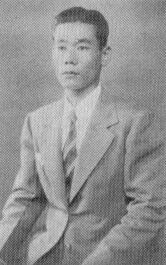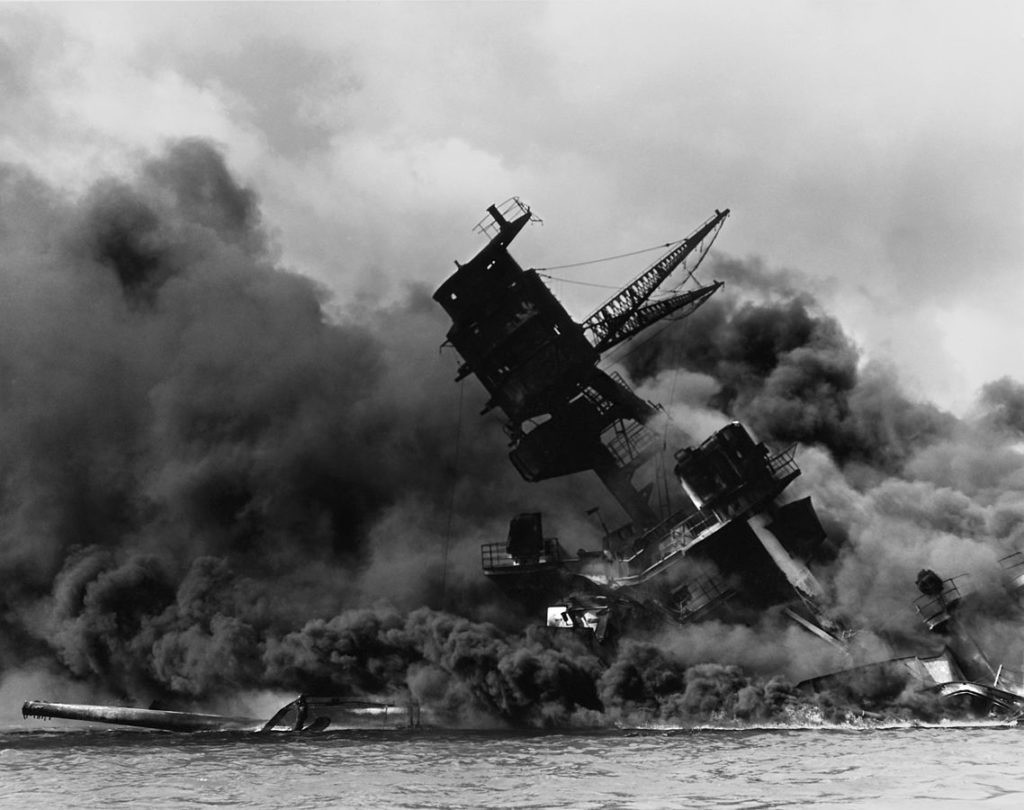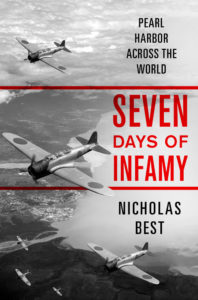WCAG Heading
by Nicholas Best
When the task force slipped out of port on December 5, 1941, a man calling himself Tadashi Morimura watched from a few hundred yards away to the north. He was careful not to write anything down, but he missed nothing as Lexington put to sea. With the help of the reference book Jane’s Fighting Ships and a good memory, he knew exactly which American warships were leaving harbor. It was his job to record their movements and report them to his spymasters in Tokyo.

Morimura had been in Oahu since the end of March. Ostensibly he was a junior official at the Japanese consulate on Nuuana Avenue. In reality he was a spy, Admiral Yamamoto’s principal eyes and ears on the island. His consular duties were simply a cover for his clandestine activities as Japan prepared for war with the United States.
Morimura’s real name was Takeo Yoshikawa. He was twenty- nine years old, a former trainee pilot with the Japanese navy. Invalided out of the service with a stomach condition, he had been recruited as a spy instead and posted to the consulate in Honolulu. He had spent the last eight months familiarizing himself with every army, navy, and air force base in the Hawaiian Islands. Ready for the day that the information would be needed when war became inevitable.
WCAG Heading
Takeo Yoshikawa Tours the Island
Takeo Yoshikawa’s colleagues at the consulate knew nothing of his spying activities. To them he was just an idle young man, often too lazy to return to work after lunch. He preferred to spend his afternoons driving around the islands instead, like a tourist.
Takeo Yoshikawa also spent hours lazing at a Japanese tea house on Alewa Heights. The place was staffed with pretty girls and had a wonderful view of Pearl Harbor from the front windows. Every thing from Ford Island to Hickam Field was plainly visible from the heights. Everything was laid out in a panorama below. The tea house even kept a telescope for guests wanting to have a closer look.
Sometimes Takeo Yoshikawa took a girl with him and went for a trip on a glass-bottomed boat. He pretended to enjoy the underwater tour of Kanoehe Bay, on the other side of the island, which the Americans were said to be considering as an alternative anchorage for their fleet. In reality he estimated the depth of the bay at various points. He concluded that it was too shallow for large warships.
A Flight with Geisha Girls Reveals Hawaii’s Runways
He also attended an open day at Wheeler Airbase, noting that three aircraft could take off simultaneously, which meant that fighter squadrons could become airborne relatively quickly. He twice took a tourist flight over Oahu with a geisha girl as cover. Takeo Yoshikawa used the first flight to note the direction of the runways at Wheeler and estimate the number of aircraft there by counting the quantity of hangars.
His second flight, on October 13, had confirmed that the Americans were not dispersing their fleet around other anchorages on the island, as Tokyo had speculated. Fearing sabotage from the local Japanese population, the Americans preferred to keep their ships, like their aircraft, close together in one place for better protection.
Takeo Yoshikawa’s information wasn’t always accurate, but he was an effective spy nonetheless. While monitoring U.S. Navy messages in Tokyo, he had received a personal letter of thanks from Adolf Hitler for alerting the Germans to a British troop convoy that subsequently suffered heavy losses. He was always careful not to arouse suspicion in his work or do anything to draw the attention of the authorities to himself. Nevertheless the Americans had been onto him from the start. He was clearly too young for his diplomatic responsibilities at the consulate. There was no Tadashi Morimura listed in the Japanese diplomatic register. As a consequence the Americans had tailed him for months. However they had never managed to pin anything on him that could lead to his arrest and expulsion from the islands.
Takeo Yoshikawa Knew Nothing of the Japanese Plan
Takeo Yoshikawa knew nothing of the Japanese plan to attack Pearl Harbor as he watched Lexington’s departure that morning. However it did not take a genius to put two and two together. On September 24 the Japanese Foreign Ministry had asked the Honolulu consulate to divide the waters of the harbor into five separate areas and report back on the number and location of warships in each. The ministry had been particularly interested to know the number of battleships moored together in the stream, side by side.

Much more recently, on December 2, Tokyo had sent this message: In view of the present situation, the presence in port of warships, airplane carriers, and cruisers is of utmost importance. Hereafter, to the utmost of your ability, let me know day by day. Wire me in each case whether or not there are any observation balloons above Pearl Harbor or if there are any indications that they will be sent up. Also advise me whether or not the warships are provided with anti-mine nets. It could hardly have been clearer that an attack on Pearl Harbor was being considered, even if no decision had been taken.
Takeo Yoshikawa Watches Lexington’s Departure
Knowing what might be about to happen, Takeo Yoshikawa watched Lexington’s departure with considerable concern. There were now no aircraft carriers left in harbor as the weekend approached. It was normal for two if not all three of the U.S. Pacific carriers to be in Pearl Harbor for the weekend. Most unusually, however, all three were now at sea, at large somewhere on a very wide ocean.
Takeo Yoshikawa noted Nevada’s arrival after the task force’s departure. He stayed to watch as two more battleships arrived later in the day, routinely returning to base for the weekend. Then he hurried back to Honolulu and went to transmit the details to Tokyo.
Excerpted with permission from SEVEN DAYS OF INFAMY: Pearl Harbor Across the World by Nicholas Best. Published by Thomas Dunne Books. Copyright 2016.
NICHOLAS BEST grew up in Kenya, served in the Grenadier Guards, and worked as a journalist before becoming a full-time author. His many other books include Five Days That Shocked the World, Happy Valley: The Story of the English in Kenya, Tennis and the Masai, and The Greatest Day in History. For ten years he was a fiction critic for the Financial Times and has written for countless other publications. He currently lives in Cambridge, England.

